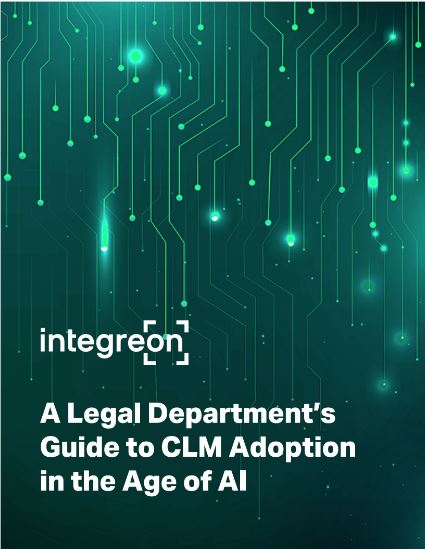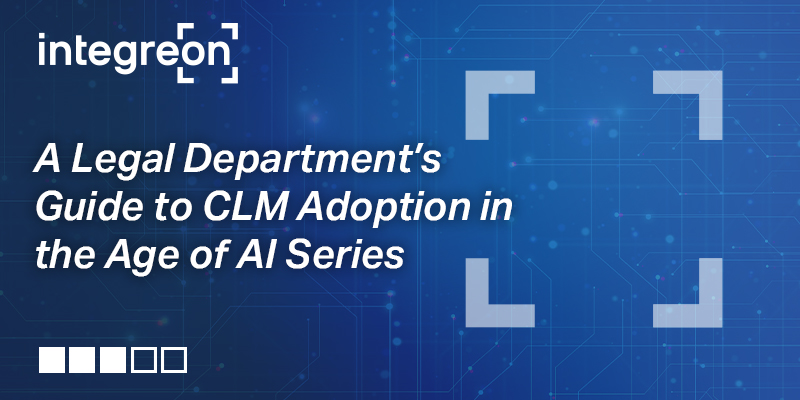This is the third blog of a five-part series on CLM Adoption in the Age of AI. Read the first blog here.
Evaluating CLM systems with generative AI (genAI) capability requires some new twists in thinking about technology vendor qualifications.
Experience and Reputation
Established vendors with many customers would typically have an edge over newcomers as they could demonstrate a track record of successful implementations and a steady developing roadmap. With the advent of genAI, innovation and ability to demonstrate relevant outcomes move to the forefront. Smaller players who can focus on their initial customers and take input on their evolving product take on more value.
An established reputation must be balanced against the ability to adopt new approaches and take the best advantage of new thinking. Don’t get distracted by a multitude of features and assess instead if the core capabilities you need are present and are being delivered with evolving evidence of innovation.
AI and Process Maturity Level
Potential CLM platforms offer a range of genAI integration from basic chat plug-ins for tools like Microsoft Word to completely bespoke AI-driven workflows. Understand your own AI and process maturity. Ask yourself if your organization can tackle low-code solution building or will you need help from the vendor or partners. Pre-built solutions can offer sophisticated capabilities but lack the customization and flexibility that a less hard coded approach would offer.
Choose a vendor who can demonstrate continued investment in AI advancements. Understand the size of their out-of-the-box prompt library and how much it has grown over what period. Be sure to ask if you can create your own prompts or engage a partner to do so. GenAI solutions work best when tailored to your environment; knowing if you are reliant on additional vendor development to achieve optimal output is important.
Integration Depth
Integration flexibility is an important feature for your CLM solution. The last thing a legal team needs is an isolated tool that cannot connect with and contribute to your larger environment. A CLM operates as part of your organization’s broader technology stack and should be able to interface effectively with your CRM, case management, and other tools and repositories. A poorly integrated system or one incapable of connecting across your systems will limit future digital success.
Make sure your CLM provider has a thoughtful and robust integration approach that can be accomplished using your own IT team or reasonably available partner or vendor resources.
Ease of Use
Always ask, is the tool simple to use? Today’s well-designed technology is approachable, intuitive, and easily learned. Users expect to be able to operate without complicated user guides and complex difficult to remember steps layers of action.
End-to-end process steps should be assessed for required clicks, clarity of labels, and logical progressions. Ask how much you can tailor the on-screen experience to your own nomenclature without requiring process customization. The more system terminology is familiar to users, the easier adoption will be.
The Dollars and Cents Decision
If you have assessed your readiness, defined your processes, and matched your requirements with a short list of vendors then it is time to turn to financial selection criteria. The real price of a CLM tool includes not just the license model, but also the costs for system set-up and configuration, integration development, data cleansing and migration, training, and on-going support. Factor in staffing costs for system administration to handle tool updates, user permission management, reporting, and AI evolution. Consider giving these activities to a certified service provider that can work as an extension of your team and preserve your internal resources for your core business work.
The Bottom Line
It takes thorough planning and careful consideration to select a CLM vendor and system that will deliver on your investment with the greatest downstream value. And, once you’ve made your selection, you will need to invest in proper deployment and strong, consistent post-implementation support to achieve the returns you are targeting to enjoy.
If you are interested in learning more about how you can effectively evaluate, adopt, and optimize CLM technology in 2025, especially given the new dimension genAI creates for this class of legal tech, download our eBook, “A Legal Department’s Guide to CLM Adoption in the Age of AI.”

This 8-page guide covers:
- Understanding Generative AI (genAI) in CLM Solutions
- Internal Considerations for CLM Technology
- CLM Vendor Selection Considerations
- Getting the Most Out of your CLM Solution
- Gaining Momentum: Tech as a Service


